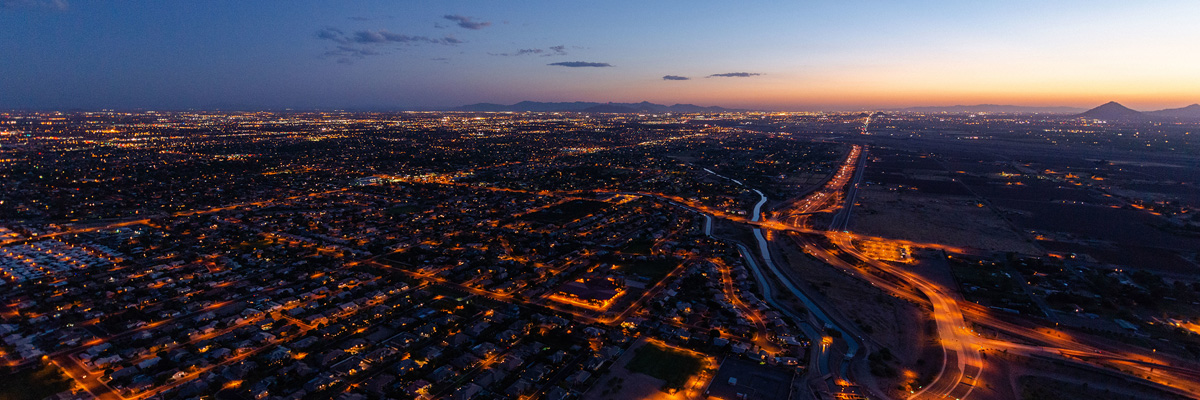
Humphrey-Turpen 69kV transmission project
SRP's mission is to deliver high-value electricity and water for the benefit of our customers and the communities we serve. In order to deliver this promise, it requires SRP to also address future energy needs today.
On this page:
Project need and benefit
To meet the growing energy demands within your community, SRP is planning to construct new infrastructure to enhance reliability for current customers and support new and expanding developments within this area. This project will integrate into the existing system which will bring greater reliability, reduce the probability of power disruptions, as well as support the economic growth anticipated for this region. By creating the expanded infrastructure now, it will make this area more appealing for new businesses and residential developers, all while providing reliable electricity to our existing customers.
The project consists of constructing a new 69kV transmission line that will connect from the existing Humphrey Substation located on Riggs and Lindsay Road to the Turpen Substation located on Appleby and Lindsay Road. The transmission network of 69kV power lines serves as the backbone of SRP’s neighborhood electrical system. These power lines interconnect local substations, providing system redundancy and reliability. From the substations, the 69kV gets converted down to 12kV, which then feeds homes, schools and businesses.
Route selection process
SRP engineers considered a variety of factors in the route selection process including future electrical needs, safety, construction feasibility, maintainability and cost. The selected route makes use of the existing SRP lines where possible. Along Riggs Rd from Humphrey Substation to Val Vista Drive, SRP will modify its existing 69kV line to support the new circuit within the existing alignment. The remaining segments along Val Vista Dr. and Appleby Road will be a new line supporting a single 69kV circuit.
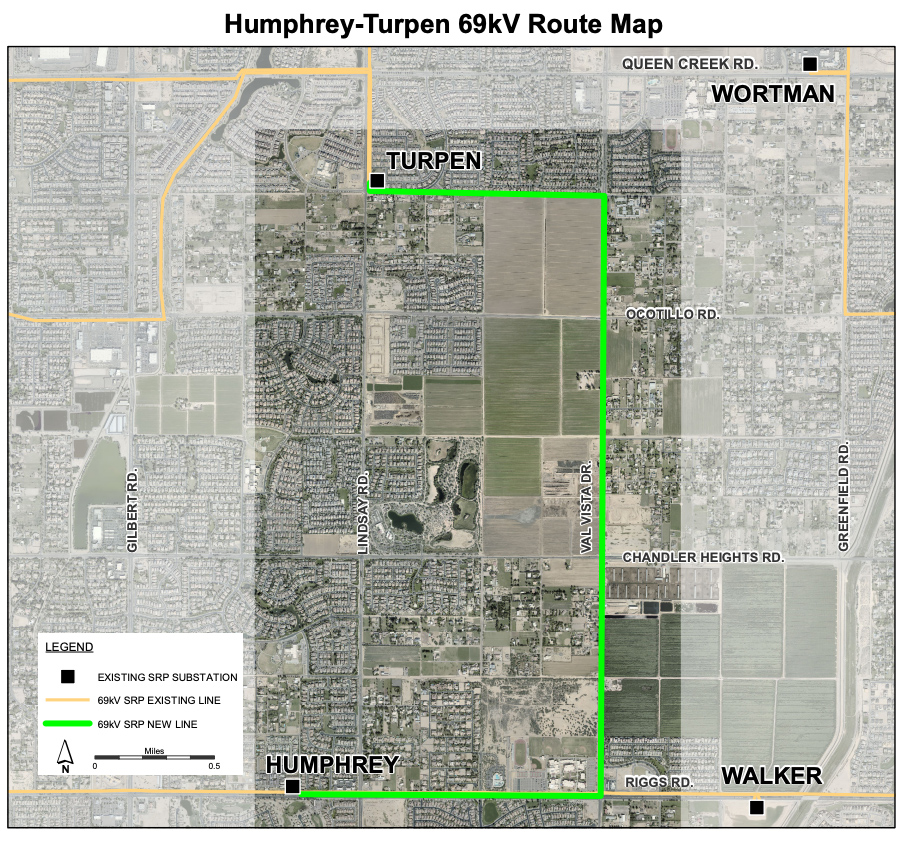
Pole structures
The typical 69kV pole is approximately 55 to 70 feet tall.
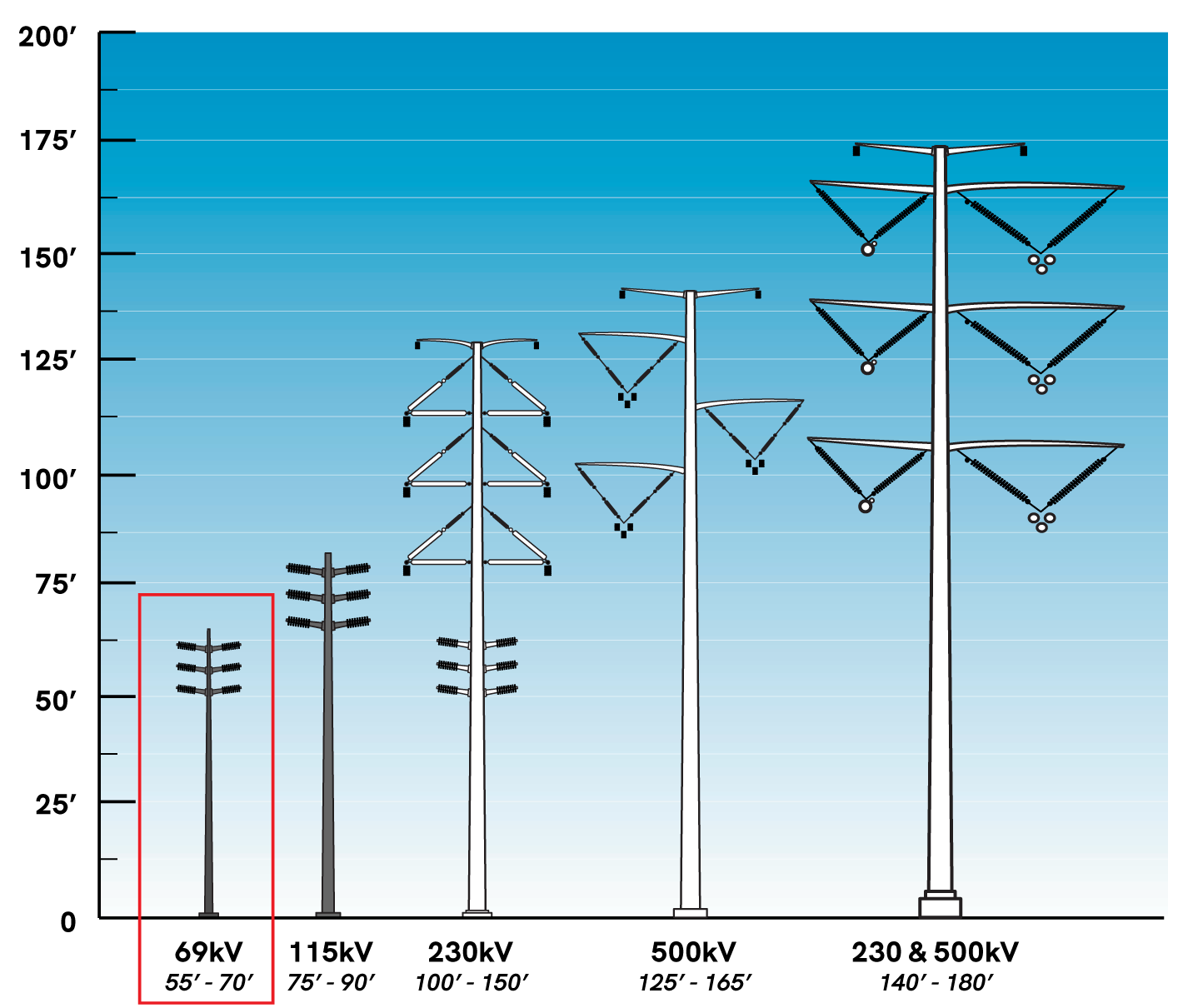
Below are types of poles you may see installed on this project. Click on an image to make larger.
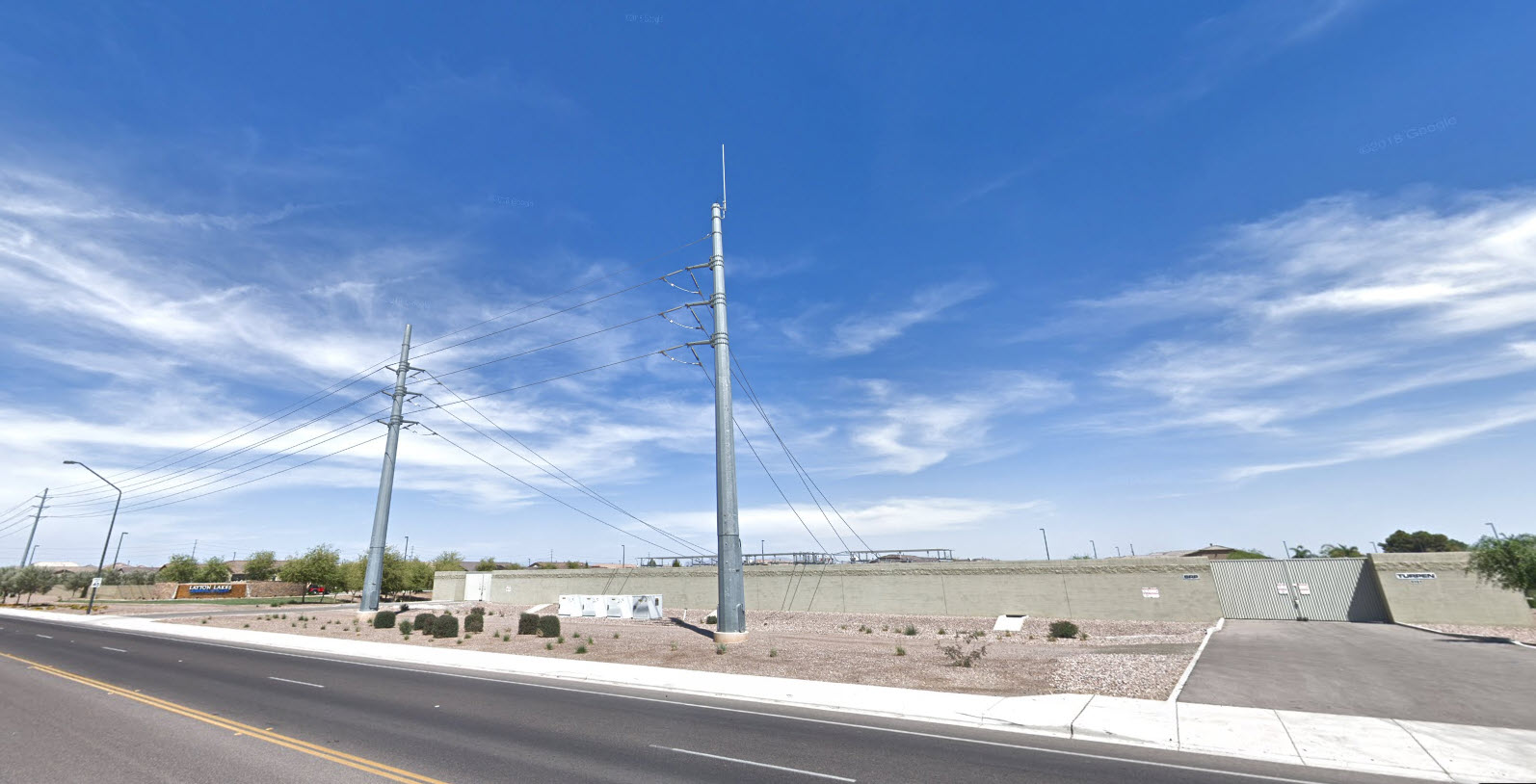
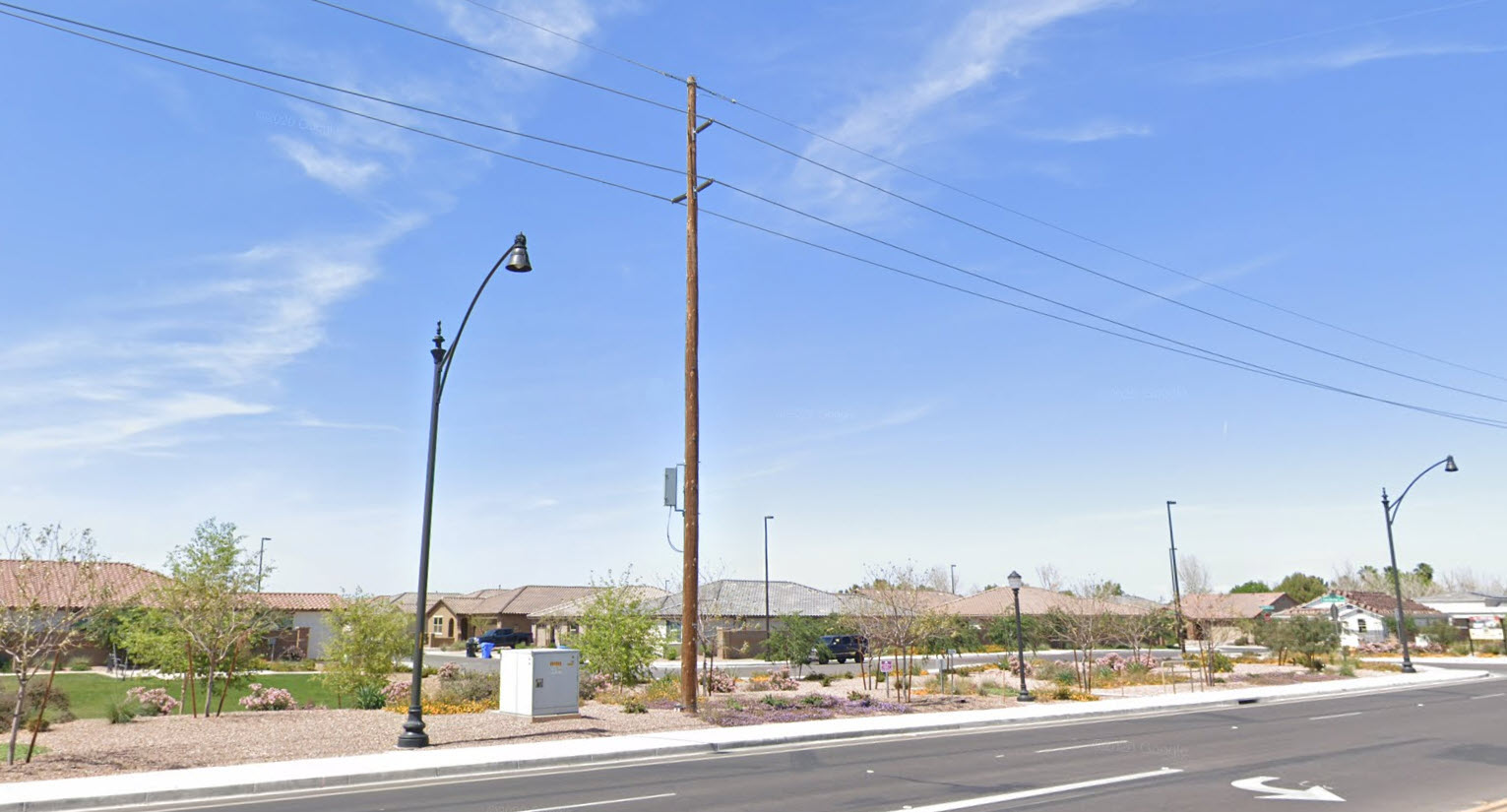
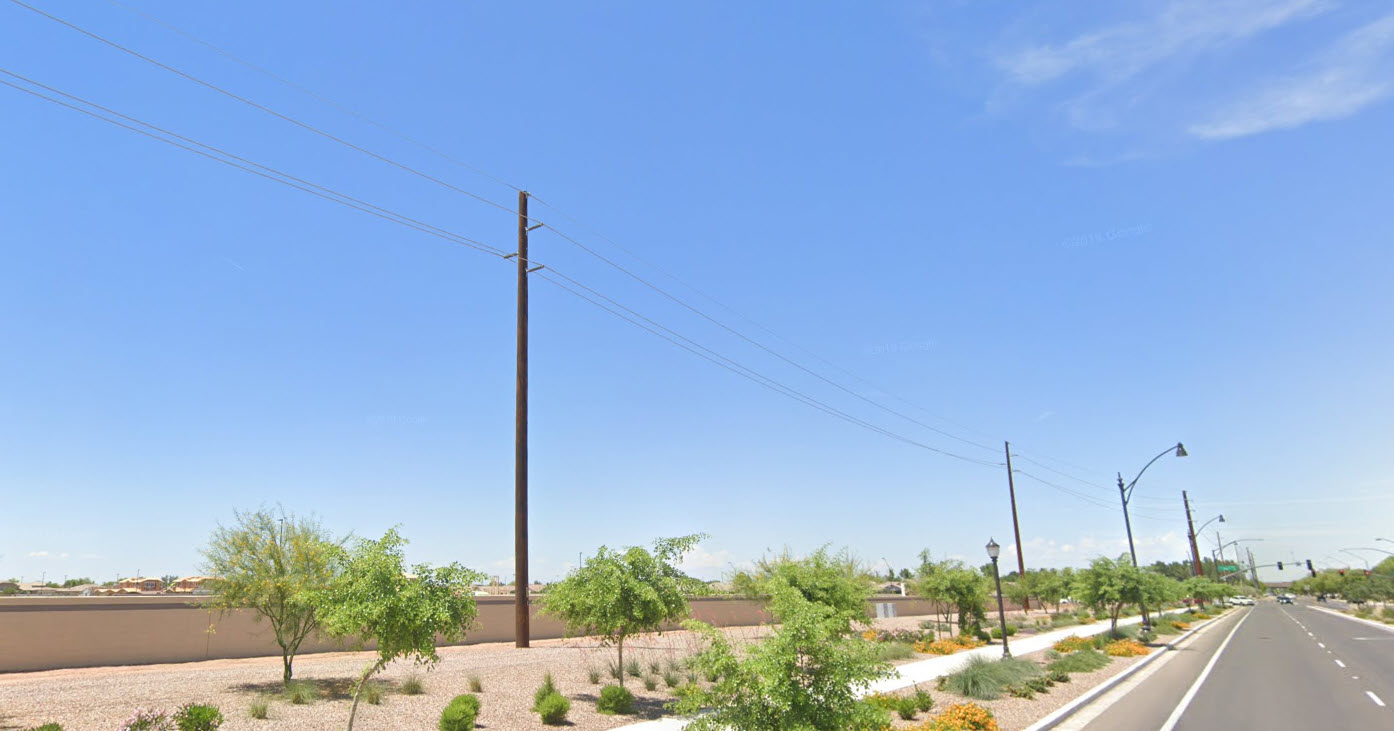
How electricity gets to you
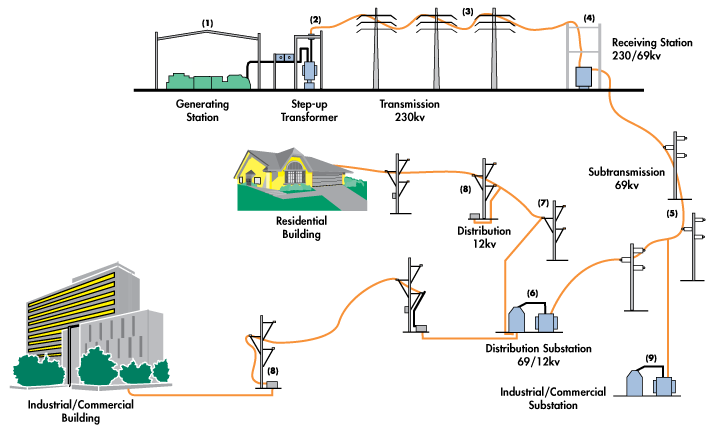
Public outreach
SRP strives to provide our communities with advance notice of infrastructure improvements. Customers and property owners along the route will be notified in advance of construction. At this time, we anticipate construction to commence in February of 2022 and the new line to be in service by March 2022.
Contact us
If you have questions, please call (602) 236-2872(602) 236-2872 or email 2872Line@srpnet.com.
Frequently asked questions
Overview
A new 69kV transmission line will be built connecting the Humphrey and Turpen Substations in order to provide additional energy to SRP customers and to serve the future planned development and increased density in the Chandler/Gilbert area. Construction of the line is anticipated to commence in the fall/winter of 2021. The project will be in the Chandler/Gilbert area. There will be a public outreach process to customers and landowners in the area notifying them of the project need and timeline for construction.
Need and benefit
The purpose of the new Humphrey-Turpen 69kV Transmission Line is two-fold. First, the new line is required to accommodate future energy demands in the growing southeast valley community. Second, this upgrade to the existing system will reduce the probability of outages, while providing higher electric reliability to the surrounding customers. This new line is part of a larger effort to upgrade SRP systems and infrastructure, so we can continue to meet the energy demands of our customers and provide reliable power.
SRP’s 69kV transmission power line network serves as the backbone of SRP’s neighborhood electrical system. These power lines interconnect local substations, providing system redundancy and reliability. 69kV transmission lines bring power to substations to meet the area's growing demand for power and provide better electric reliability to the community.
New development in the area will increase overall load on the system. By increasing the capacity now, SRP can get ahead of potential growth and reduce the risks of outages in the future. This addition will increase overall reliability and decrease overall outage response time.
Design, engineering and construction
SRP will construct a 69kV transmission line between the Humphrey and Turpen Substations. The wooden poles will be made of Douglas Fir trees or weathered steel allowing the poles to blend in with the local landscape. There will be between 55 and 70 new poles constructed. The poles will be between 65 and 75 feet tall and spaced between 250 and 350 feet apart. The total length of the line is approximately 5 miles. It begins at Humphrey Substation, on Riggs Road just west of Lindsay Road, where SRP will use existing poles to construct the line east along Riggs Road. At Val Vista Drive the line will go north to Appleby Road. Here the line turns west until it reaches the Turpen Substation at the northeast corner of Appleby and Lindsay Road.
SRP’s standard construction practice for 69kV lines is overhead construction which allows for easier maintenance of the lines and reduced construction costs to be born by our customers.
Undergrounding a 69kV power line costs about $3.5 million per mile per circuit – 10 times the cost of overhead construction. Future costs for underground 69kV projects are difficult to predict because of the rapidly rising costs of oil and copper, two key components of the underground wire. Our 69kV lines traverse neighborhoods across the Valley; burying all of them would be very costly and affect our customers’ electric prices substantially.
Developers often bury existing 12kV distribution lines and build the new electrical infrastructure underground. Those costs are paid for by the developers, typically $1 million per mile. In the very few cases where SRP has located high voltage transmission circuits underground, the cost differential was funded by a third party for safety reasons like the proximity of a line to an airport.
SRP engineers considered a variety of factors in making our final route selection: the ability to obtain land rights/easements; construction feasibility; maintainability; cost; public impact; environmental concerns; and existing development in the area.
A substation is a facility that converts a higher voltage of electricity to a lower voltage (or vice versa) by use of one or more power transformers. Similar to a switchyard, a substation also monitors and protects each circuit (including distribution circuits), and provides operational control to ensure the system is safe, reliable, and maintainable.
The costs of this project are included in our rate base which is re-evaluated each time SRP goes through a price process. We do not believe that the cost of this line will have a significant impact on rates.
SRP is a community-based, not-for-profit organization. We make decisions in the best interest of our customers and the communities we serve. We do not have shareholders or pay dividends. Revenues generated through the sale of electricity are reinvested in the company to help keep SRP prices among the lowest in the Southwest.
Transmission line audible noise is characterized by crackling low frequency tones, which are best described as humming sounds. Multiple high voltage transmission lines currently exist adjacent to the property site. Depending on the exact location, the noise could vary slightly from the noise associated with the existing electric infrastructure.
Land
The line will be designed and then SRP will identify the specific and necessary easements for the project. Depending on the final design, there may be some easements necessary on private properties. The typical easement width for a 69kV transmission line is between 30 and 40 feet.
There are many variables to consider in the valuation process. Each property is different; an appraiser would have to take into account the criteria of the property (e.g., size, zoning, location, proximity to major arterial streets, etc.). In the valuation process, the appraiser would also consider current market conditions of the area and its unique amenities (e.g., quality of schools, available retail shopping, restaurants, parks, other recreational amenities, ease of access via freeways and local streets, etc.).
Generally, transmission lines would not be considered as a material factor in the determination of property values. Given the number of variables to evaluate in the appraisal process, it would be premature and likely inaccurate to give any specific response regarding the value of any specific property without an appraisal.
Electric and magnetic fields (EMF)
There are no conclusive studies that show a link between electromagnetic fields and health impacts.
The major research on health effects of low frequency (60-Hz) EMF has been performed in the following areas:
- Epidemiological studies attempt to establish patterns, links or association between environmental agents and diseases in human populations, such as cancer or leukemia.
- Animal studies have been performed on animals over several generations at exposures that are thousands of times higher than the EMF in a typical residential setting.
- Biological studies look for EMF responses on individual cells or DNA.
- Clinical studies have been performed on human volunteers in residential or work environments.
The overall scientific consensus about EMF with respect to health is summarized by the information currently posted on the World Health Organization’s (WHO) website. "Based on a recent in-depth review of the scientific literature, the WHO concluded that current evidence does not confirm the existence of any health consequences from exposure to low level electromagnetic fields.”
Several thousand scientific papers have been published and over two dozen expert panels have reviewed this research. For most diseases, the epidemiology has been inconclusive and inconsistent, although some childhood leukemia studies have found an increased risk with magnetic field exposures. Epidemiological studies do not provide a conclusive cause and effect between EMF exposure and disease, and the animal, biological and clinical studies which have been done do not support a hypothesis that EMFs are harmful. Additionally, no plausible bio-mechanism is known by which 60-Hz magnetic fields would be harmful.
Yes, please refer to the following links:
Public process
SRP strives to keep our community informed of upcoming projects in the specific area. The public outreach process is comprised of meeting with public officials representing the region, jurisdictional agencies, key landowners and stakeholders to inform them about the project. Additionally, SRP mails post cards to customers and landowners in the general project area to inform them of the new facilities to be constructed. A website is also created where anyone may obtain additional information about the project and view project updates. The website address is included on the post card. A member of SRP’s Project Team will respond to all inquiries received from the public.